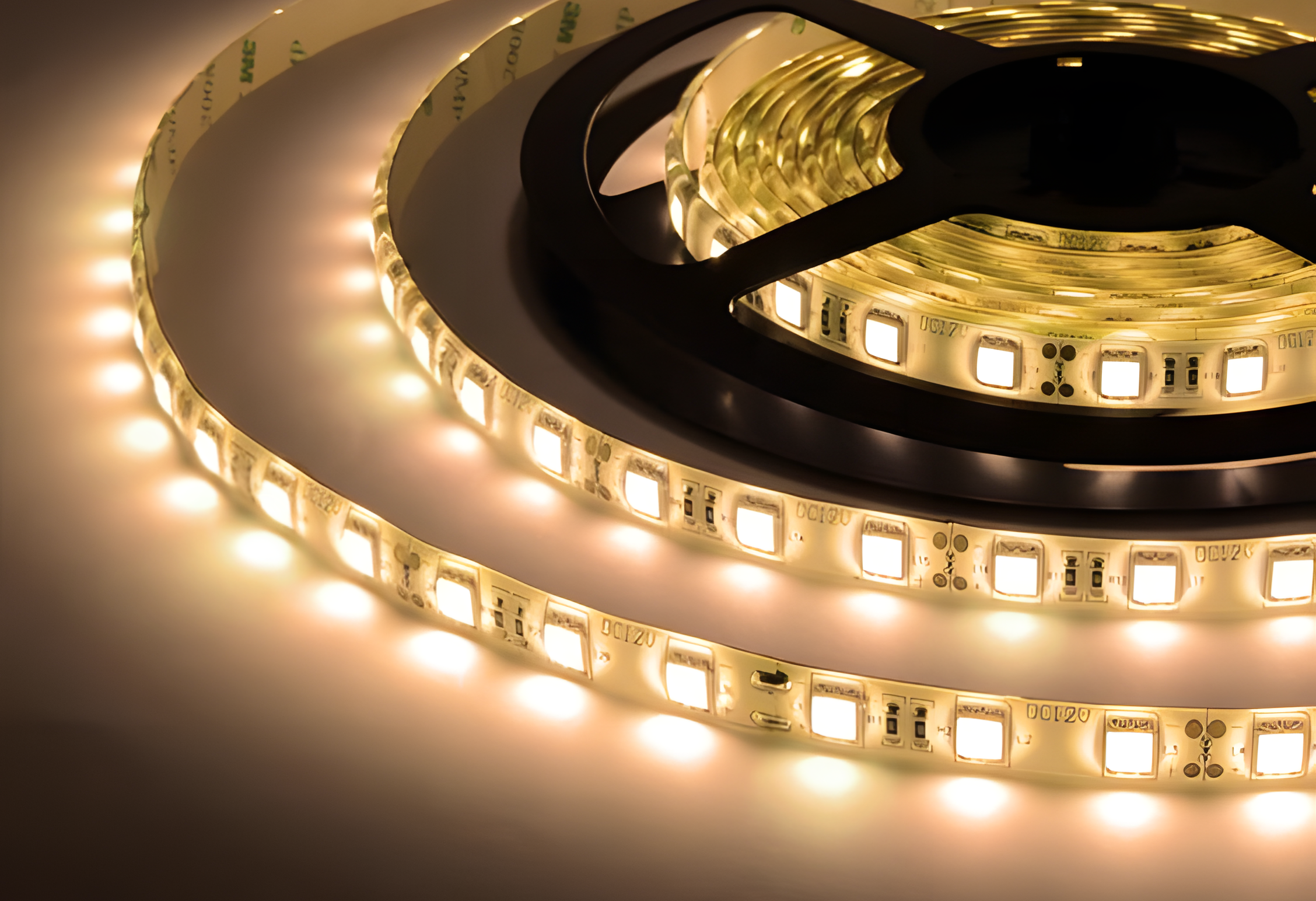
當您在購買照明用品時,是否有注意到產品包裝上標註了一些英文縮寫的參數,例如 CRI、CQS 等呢?
這些參數都是用來判斷光色品質的數據,可能只有在照明設計、攝影或者喜歡改裝LED車燈等領域的人才會比較了解。但是,對於沒有接觸過這些知識的朋友來說,也請您不要忽視它們。
您可能會問:「我不了解這些參數會對我的生活有影響嗎?」
答案是肯定的。更確切地說,雖然這些參數未必會直接影響到您的日常生活,但確實會影響到您的生活品質。
When you’re purchasing lighting products, have you noticed that the packaging often includes certain English abbreviations like CRI, CQS, and others?
These parameters are used to assess the quality of light sources. They are more familiar to those in lighting design, photography, or enthusiasts like those who modify LED car headlights. However, for those who haven’t encountered this knowledge before, please don’t overlook them.
You might wonder, ‘Will not understanding these parameters affect my life?’
The answer is yes.More specifically, while these parameters may not directly impact your daily life, they do indeed affect your quality of life.
What is the CRI?
什麼是 CRI?
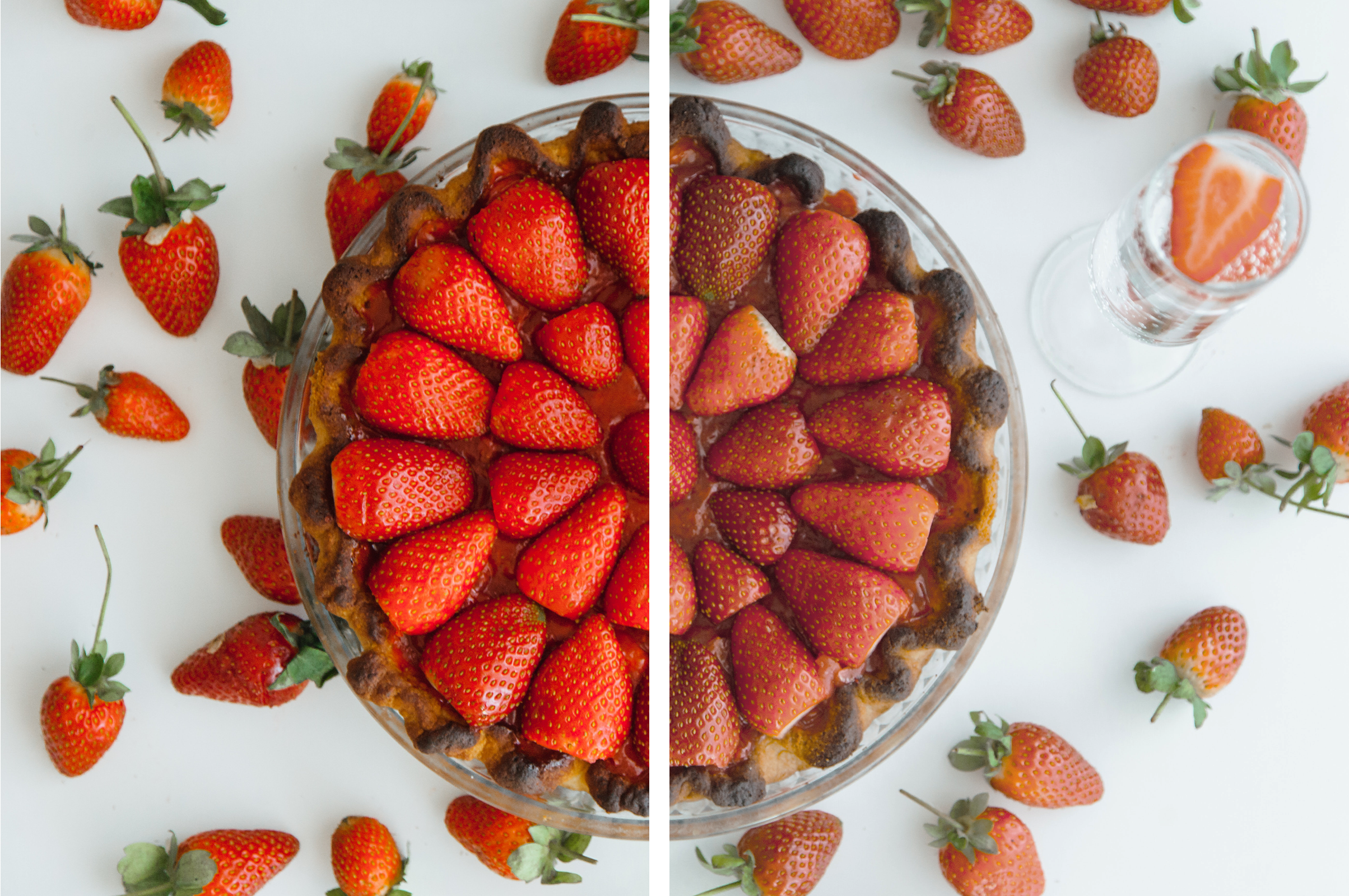
CRI,Color Rendering Index
全名「色彩再現指數」,也就是我們業內常說的「顯色指數」,是照明領域中用來評估光源在照明下再現物體真實顏色準確程度的指標。
它是通過比較一個光源與標準光源(通常指日光)之間照射後的顏色還原度來衡量的。換句話說,CRI可以用來評估顏色在人眼中的感知和光源向人眼顯示顏色的能力。
讓我們就生活舉個例子,您是否曾注意到超市中的雞肉櫃台使用了特殊照明來展示產品?
相同的相機在不同光線下拍攝,您會發現在特殊照明下,雞肉看起來鮮豔生動,吸引人眼球。但是,當它們拿出展示櫃,置於一般照明下時,顏色會顯得蒼白無神,缺乏吸引力。
這突顯了商業照明如何明顯地影響物體外觀,進而影響人們的視覺體驗。
CRI, Color Rendering Index
Also known as the “Color Rendering Index” in our industry, CRI is a metric used in the lighting domain to assess how accurately a light source renders the true colors of objects under illumination.
It is measured by comparing the color rendering of a light source to that of a standard light source. In other words, CRI evaluates how colors are perceived by the human eye and the ability of a light source to display colors to the eye.
To illustrate with a real-life example, have you ever noticed the special lighting used at the chicken counter in supermarkets?
Using the same camera to capture images under different lighting conditions, you’ll notice that under special lighting, the chicken looks vibrant and appealing to the eye. However, under regular lighting, the colors appear dull and uninviting.
This highlights how commercial lighting significantly impacts the appearance of objects and influences people’s visual experience.

關於顯色,您需要知道兩件事情:
一、不同的光源具有不同強度的顏色
太陽光包含多種顏色的光譜,而螢光燈等其他光源在某些顏色上可能會缺乏強度。如果您的照明中缺少某些顏色,那麼在被照射的場景中這些顏色就無法很好地反射出來。換句話說,如果您的燈光缺少紅色,被照射的雞肉就無法呈現出紅色。
二、物體本身並不具備顏色
例如,蘋果只會反射出光中的紅色,吸收其他顏色(例如綠色、藍色、洋紅色)。這些吸收或反射特定顏色的作用決定了物體的感知顏色。
When it comes to color rendering, there are two key points to understand:
1. Different light sources have varying intensities of color.
Sunlight contains a spectrum of colors, while other light sources like fluorescent lamps may lack intensity in certain colors. If your lighting is deficient in certain colors, those colors won’t reflect well in the illuminated scene. In other words, if your light lacks red, the illuminated chicken won’t appear red.
2. Objects themselves do not possess color.
For instance, an apple only reflects red light and absorbs other colors such as green, blue, and magenta. This absorption or reflection of specific colors determines the perceived color of the object.

接下來讓我們來談談顯色指數是如何運作的。
Next, let’s talk about how the Color Rendering Index (CRI) works.
The operation of the CRI index
CRI指標運作
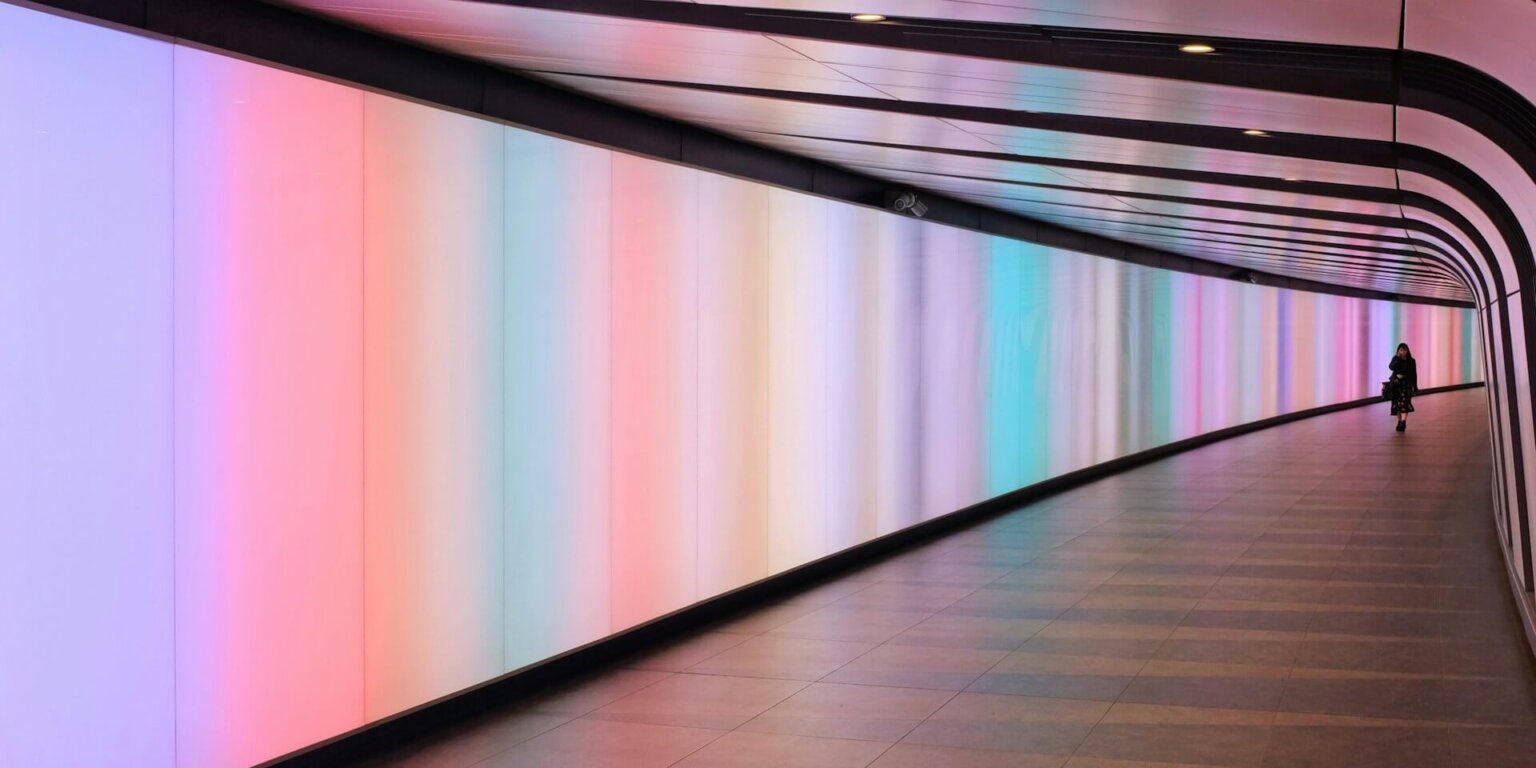
市面上燈光產品所標示的 CRI 顯色指數屬於「一般顯色指數」,通常用 CRI 或 Ra 來表示,僅取國際照明委員會(CIE)制定的八個標準顏色(R1至R8)的平均值為最終的 CRI 顯色指數的數值。
一般顯色指數的標準顏色 R1 至 R8 分別代表了八種中度飽和度的典型色調,能夠滿足基本的顏色還原需求。除了「一般顯色指數」外,CIE 還另外規範了六種高飽和度的標準顏色(R9 至 R14),這些屬於「特殊顯色指數」。
特殊顯色指數旨在檢驗光源對某些特定顏色的顯色能力,其中標準顏色 R9 至 R14 分別代表了高度飽和的紅、黃、綠、藍、白色和葉綠色,這些色彩通常出現於白人皮膚色調中。後來還增加了一種代表亞洲人膚色的顏色(R15)。
The Color Rendering Index (CRI) marked on lighting products in the market is considered a ‘general color rendering index,’ typically denoted as CRI or Ra, representing the average of the color rendering indices of eight standard colors (R1 to R8) set by the International Commission on Illumination (CIE).
These standard colors, R1 to R8, represent eight moderately saturated representative hues, meeting the basic color rendering requirements. In addition to the ‘general color rendering index,’ the CIE also specifies six highly saturated standard colors (R9 to R14), which are part of the ‘special color rendering index.’
The special color rendering index is designed to assess specific color rendering capabilities of light sources, with standard colors R9 to R14 representing highly saturated red, yellow, green, blue, white, and leaf green colors typically seen in Caucasian skin tones. Later, a color representing Asian skin tones was also added (R15).

為什麼常有人會特別提到 R9呢?
光源對紅色的顯色能力直接影響了我們皮膚和大部分紅色物體在燈光下的呈現效果。如果您有看前篇文章關於「色溫」的部分,就會知道LED燈具是以藍光再用螢光粉來調節色溫的,所以在紅色的表現上相對較差。
這意味著 LED 對紅色,尤其是飽和度較高的紅色的顯色能力就會下降,而這種下降並不能被 CRI 準確地反映出來,這也是為什麼 R9 對 LED 來說特別重要的原因。
因此我們在挑選燈具時,不僅會考慮一般的顯色指數,還會特別關注 R9 的數值喔!
Why do people often specifically mention R9?
The light source’s ability to render red directly affects the appearance of our skin and most red objects under the light. If you have read the previous article on “Color Temperature,” you would know that LED fixtures use blue light with fluorescent powders to adjust the color temperature, resulting in relatively poor performance in rendering red colors.
This means that LEDs’ ability to render red, especially highly saturated reds, will decrease. This decrease cannot be accurately reflected by CRI, which is why R9 is particularly important for LEDs.
Therefore, when selecting lighting fixtures, we not only consider the general color rendering index but also pay special attention to the R9 value!
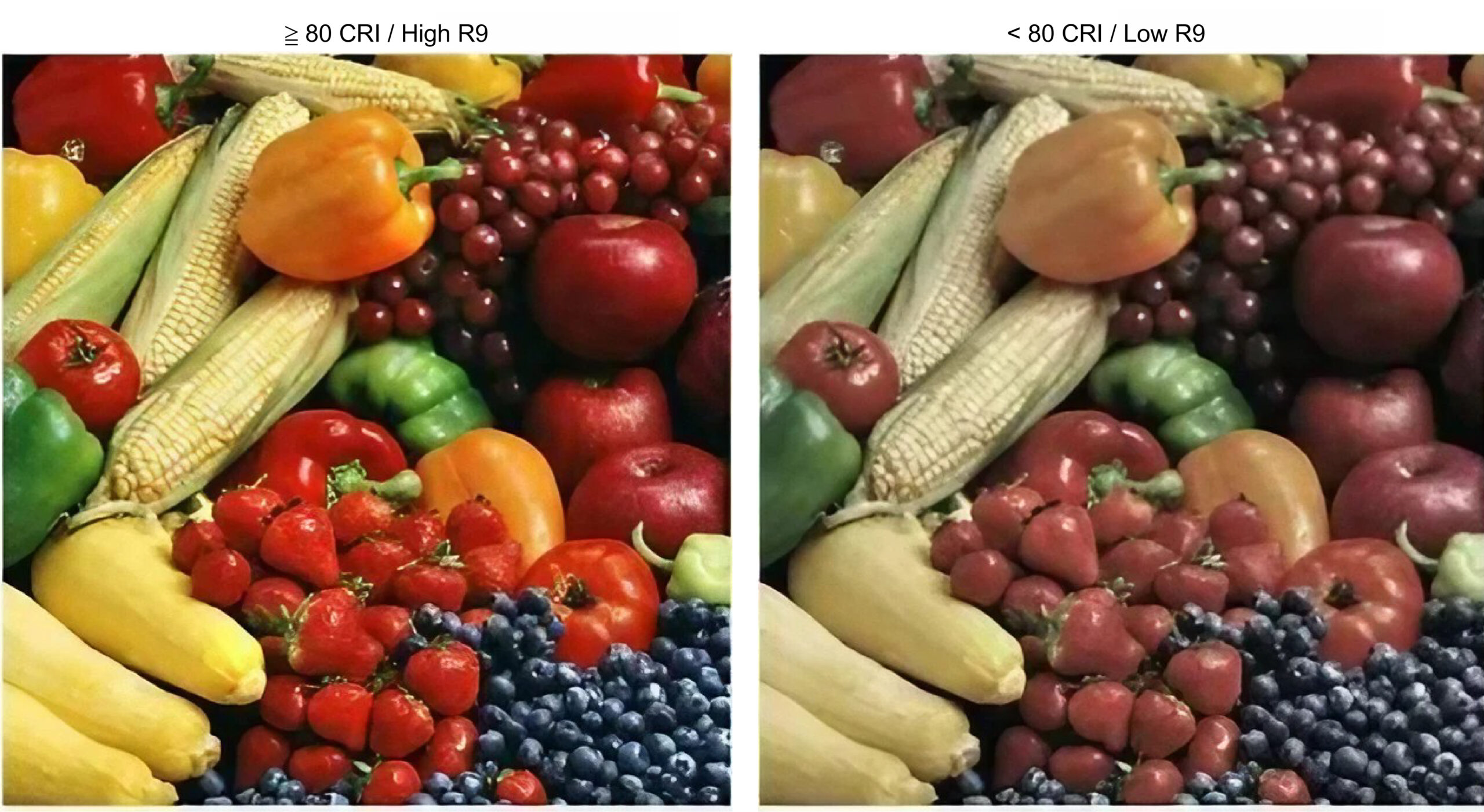
CRI 顯色指數使用太陽光(日光)作為黃金標準
我們可以使用光譜儀從照明源中獲取一般顯色指數的數據,然後將它們與太陽光產生的相同顏色進行比較。每種顏色的比較會得到0到100的範圍,然後將這八種顏色的平均值作為最終CRI顯色指數的數值。
具體的計算公式如下:
CRI = (試驗光源照射下的八種標準色的顯色指數總和) ÷ (太陽光照射下的八種標準色的顯色指數總和) × 100%
如果您的光源可以模仿太陽光的顯色能力,則顯色指數為100。然而,螢光燈可能只能獲得較低的顯色指數,約為65。因此,數值越高,燈的顯色能力越好。
CRI, Color Rendering Index, uses sunlight (daylight) as the golden standard.
We can use a spectrometer to obtain data on the general color rendering index from the light source, then compare it with the same colors produced by sunlight. Each color comparison yields a range from 0 to 100, and the average of these eight colors is taken as the final CRI color rendering index value.
The specific calculation formula is as follows:
CRI = (Sum of the color rendering index of the eight standard colors under the test light source) ÷ (Sum of the color rendering index of the eight standard colors under sunlight) × 100%
If your light source can mimic the color rendering ability of sunlight, then the color rendering index is 100. However, fluorescent lights may only achieve a lower color rendering index, around 65. Therefore, the higher the value, the better the light’s color rendering ability.

Why do we need to understand the CRI?
為什麼我們需要了解 CRI 顯色指數?

在過去,鎢絲燈等傳統光源的光色表現與日光相似,兩者都是採用黑體輻射線,這使得預測和保持光色的一致性相對容易。
然而,隨著新型光源如LED燈的出現,鎢絲燈面臨著被節能照明所取代的挑戰。
了解CRI顯色指數因而變得更加重要,因為這些新型光源在色彩表現能力上可能存在顯著差異,這取決於產品特性以及不同時期所生產的批次。這些差異會直接影響物體在其照明下的呈現效果,尤其是對於需要準確色彩表現的場景而言。
In the past, traditional light sources like incandescent bulbs had color rendering similar to daylight, as both utilized blackbody radiation. This made it relatively easy to predict and maintain color consistency.
However, with the emergence of new light sources such as LED bulbs, traditional bulbs are facing the challenge of being replaced by energy-efficient lighting.
Understanding the Color Rendering Index (CRI) has become more crucial because these new light sources may exhibit significant differences in color performance. This depends on product characteristics and production batches from different periods. These differences directly impact the appearance of objects under their illumination, especially in scenarios requiring accurate color rendering.
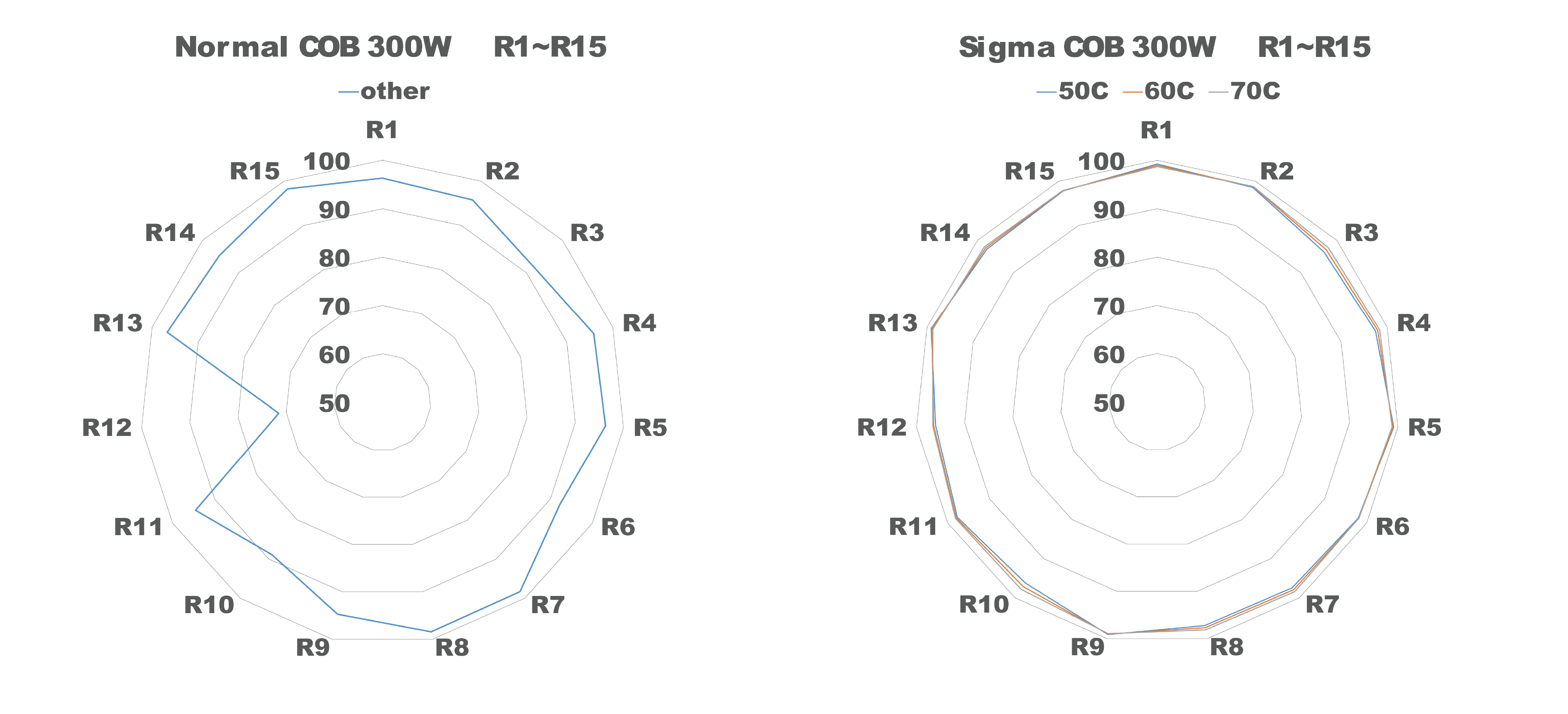
如果沒有測量CRI顯色指數,我們將只能依賴燈具包裝上標示的規格來了解燈具的色彩表現能力。
但是,並非所有廠商都會標示CRI顯色指數,因此在選擇照明產品時,可以考慮其他可見的指標,例如色溫、光通量、色彩一致性等。
這些指標也可以幫助您評估照明產品的性能,有助於確保選擇到符合需求的高質量照明產品。
If the CRI is not measured, we will have to rely on the specifications listed on the packaging of the lighting fixture to understand its color performance.
However, not all manufacturers will indicate the CRI, so when choosing lighting products, other visible indicators can be considered, such as color temperature, luminous flux, color consistency, and so on.
These indicators can also help assess the performance of lighting products, ensuring the selection of high-quality lighting products that meet the requirements.
Common Applications of CRI
一般使用 CRI 的場合
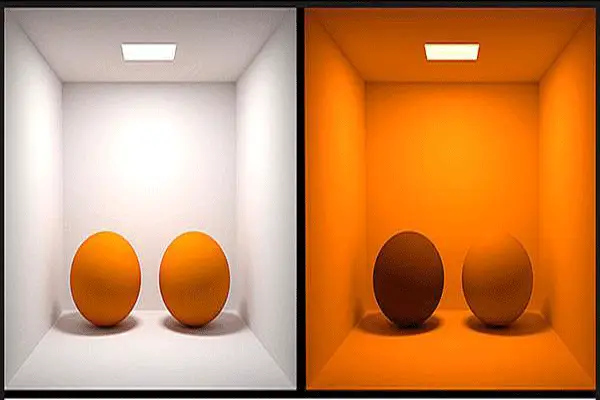
LED 燈色質管控
燈具出廠前須使用CRI R1-R14評估同色異譜,以確保LED產品在不同照明環境下色彩一致。
Before shipping, lights must be evaluated using CRI R1-R14 to ensure consistent color performance across different lighting environments.

燈具採買
需求買家使用光譜儀抽查,以確保產品的CRI符合賣家聲稱的規格。
Buyers use a spectrometer to spot-check and ensure that the product’s CRI meets the specifications claimed by the seller.

商品展示
透過高顯指的燈具,展現出商品豐富多彩的色彩,以吸引消費者購物。
The clothing requires lighting with a high CRI to display vibrant and colorful hues.

外科手術
解剖或是精細作業時需要使用高顯指的燈具,以便正確區分身體各個組織。
For dissections or precise work, high-CRI lighting is essential to accurately distinguish different body tissues.

區分藥物色彩
在藥房、養老院或任何需要準確區分藥丸、試劑顏色的場合,CRI顯色指數非常重要。
In pharmacies, nursing homes, or any setting where accurately distinguishing the colors of pills or reagents is necessary, a high CRI is crucial.

藝術色彩修復
藝品展覽、修復工作室等場所,需使用高顯指的照明設備,以確保對藝術品色彩的準確呈現和修復。
Art exhibitions, restoration studios, and similar venues require lighting fixtures with high CRI values to ensure accurate representation and restoration of artwork colors.
下篇將介紹色質指標CQS,希望能進一步加深讀者對光色品質的認識。
The next part will introduce the CQS, aiming to deepen the readers’ understanding of light color quality.
色容差SDCM
A Brief Discussion on Color Temper…
光學角度Beam angle
What’s Beam angle? 什麼是光學角度? The ap…

